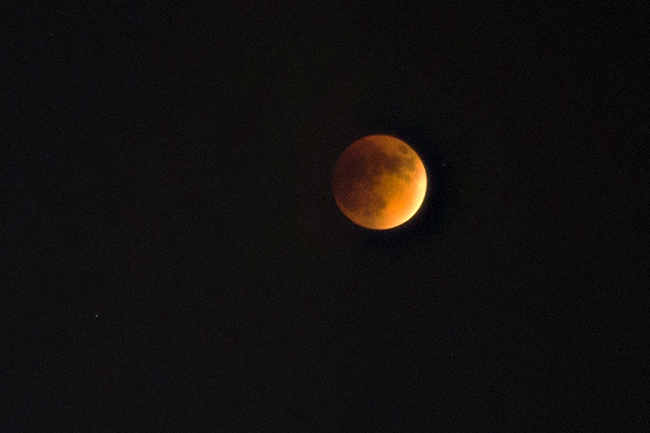Once in a blue moon, the sun, the earth and the moon align to cause a rare astrological event. At approximately 9:11 p.m. in Austin, a supermoon — when the moon is full and closest to the earth in its orbit — crossed directly into Earth’s shadow causing a supermoon eclipse. This event happens every few decades, with the last occurrence in 1982 and the next in 2033, according to UT astronomy lab technician Lara Eakins.
Lunar eclipses are when the moon’s orbit crosses into Earth’s complete shadow. During this time the sun, the moon and Earth are all in an almost straight line. The moon does not go completely invisible because the sun’s light is bent to create a reddish glow, according to UT Professor John Kormendy.
The moon’s orbit is not a perfect circle but has points where it is further from or closer to Earth. When a full moon happens to be at its closest point to Earth, it appears bigger and brighter.
“Lunar eclipses are fun to watch since you really don’t need any special equipment to observe them,” Eakins said in an email. “The timing on this one is particularly good since kids that have to go to school the next morning won’t have to stay up too late to see the moon totally eclipsed.”
Across campus and the world watch parties gathered to view the eclipse. Radio-television-film freshman Jared Marxuach saw the moon from the honors quad and said his astronomy professor, Steven Finkelstein, got him hyped for the eclipse.
“It’s crazy to think the Earth right now is in the perfect exact position to block the moon,” Marxuach said. “It’s such a rare event, and I get to witness it. Watching it has been magical. It’s a fun, relaxing experience to see nature do something cool.”
Not everyone was excited for the supermoon. Kormendy, a professor in the astronomy department, said he wasn’t aware of the event prior to press time.
“I doubt that anyone would notice [the difference in size of the moon] unless they made rather precise measurements with a telescope,” Kormendy said in an email. “I did not know about this one … I am not more excited now than before [I knew].”





















